Menopause exercises: best activities to alleviate symptoms
Give these menopause exercises a try to ease common symptoms and maintain good health
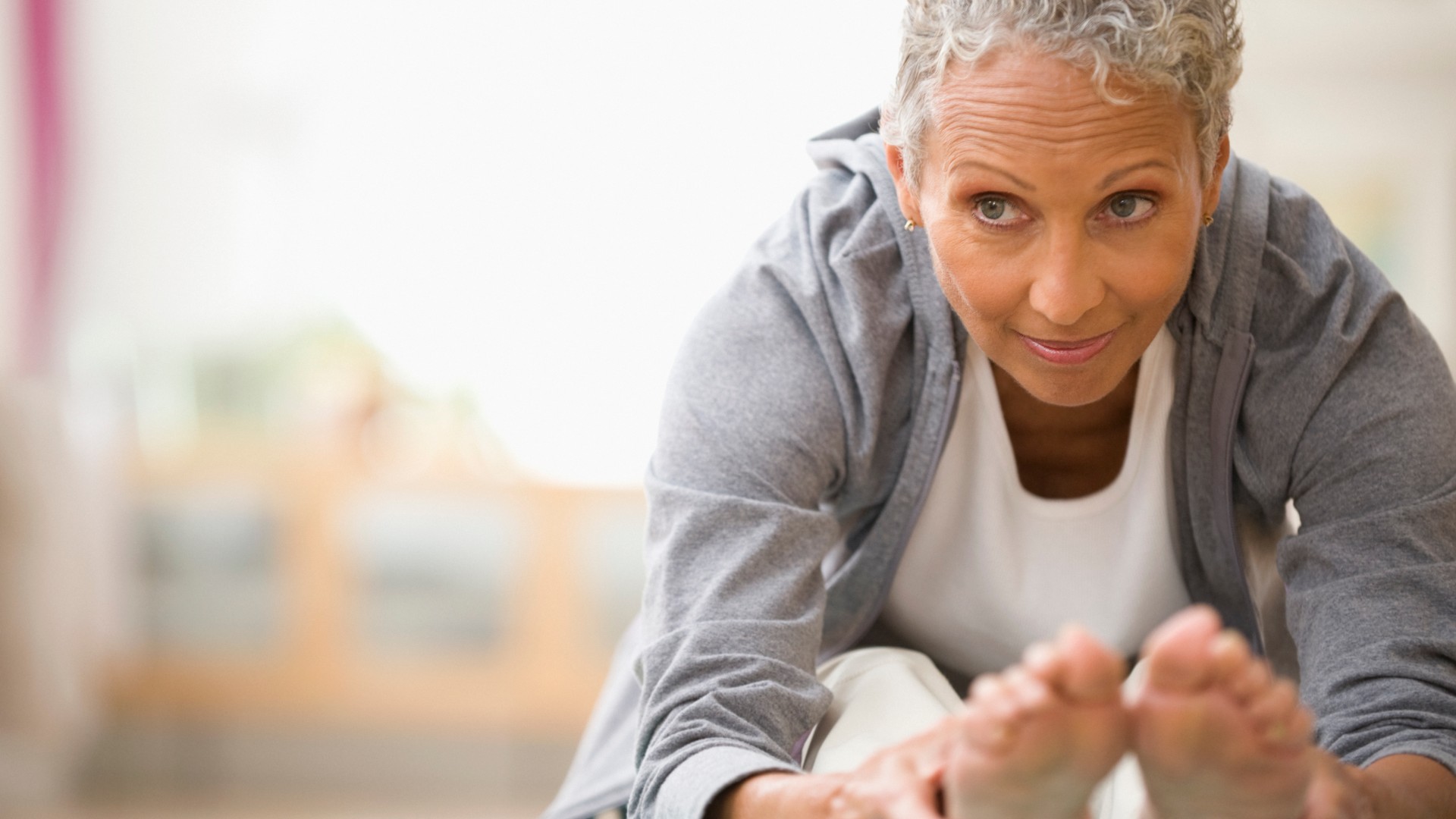
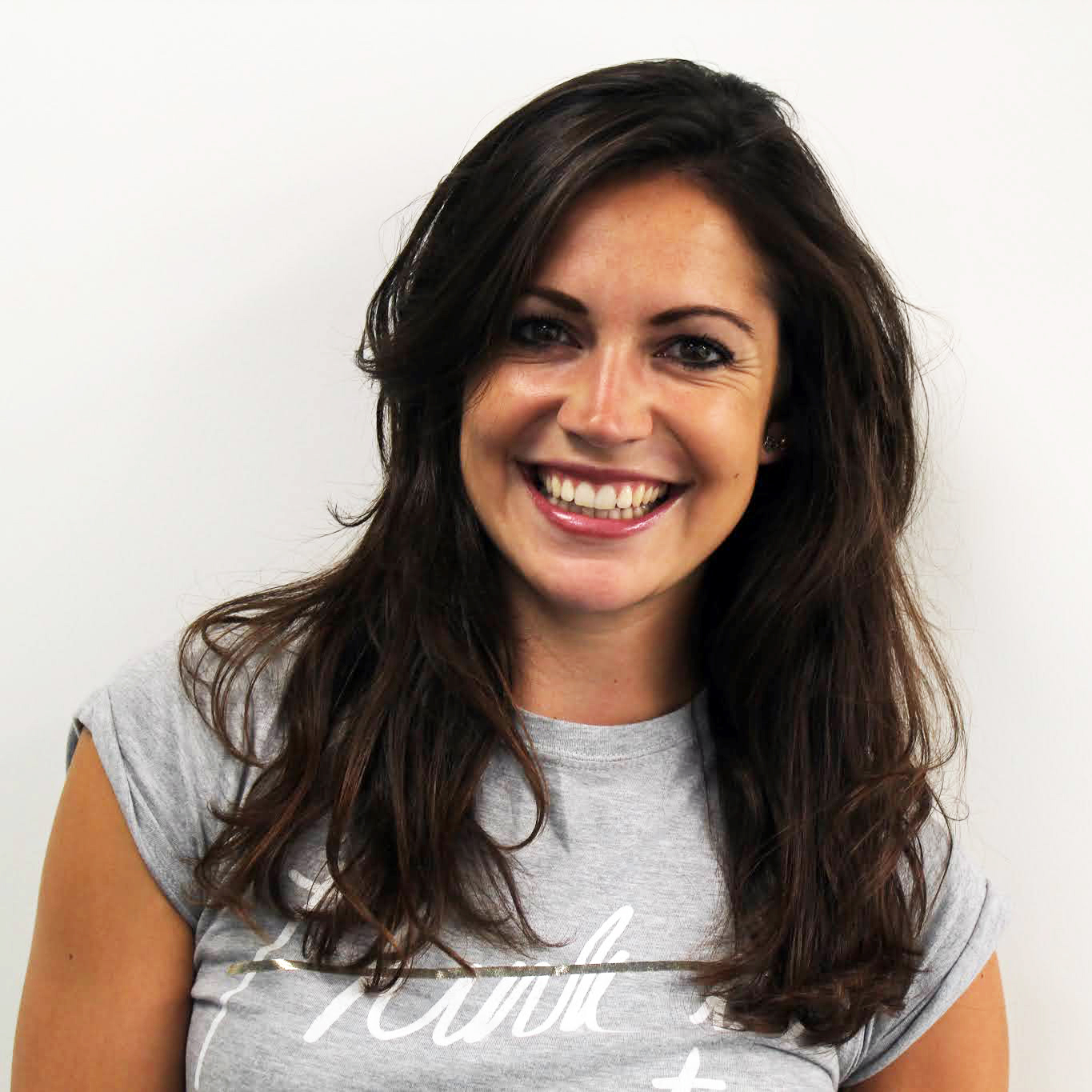
Medical and fitness professionals alike agree on the importance of exercise in menopause.
The menopause doesn’t just mark the end of a woman’s menstrual cycles; it’s also a period of transition, in which you may experience exhausting physical and mental symptoms that can really affect day to day life.
Common issues include loss of muscle mass and bone density, sleep challenges, a slower metabolism and menopausal weight gain, often linked to changes in appetite. One study confirmed decreased levels of the satiety hormone leptin, can lead to an increased appetite. Some women also experience bladder issues and constipation.
Managing the symptoms takes many forms. Many women turn to hormone replacement therapy (HRT), whilst others rely on the best menopause supplements to tackle general or specific symptoms. However, lifestyle - include exercise during menopause - also has a role to play.
However, unfortunately many of the symptoms can impact a woman’s menopause exercise routine - but are also the reason why it's essential to keep (or start) working out during this life stage.
‘Some women find these menopausal changes actually make it challenging to stick to exercise,' says Antonietta Vicario, VP of Talent and Training at fitness brand P.volve. 'But it’s imperative to move to help mitigate some of the effects of menopause.
'By incorporating exercise into one’s lifestyle, they can minimise the effects of the menopause and keep their mind and bodies working optimally.'
Get the Fit&Well Newsletter
Start your week with achievable workout ideas, health tips and wellbeing advice in your inbox.
Below, we explore some of the best menopause exercises you can do during this time to help ease symptoms and maintain good health. Vicario also shares a simple four-move at-home menopause workout to try.
Strength training
Women going through the menopause loose bone density and muscle mass year over year, which leads to a slowing of the metabolism. This is thanks to a decline in the hormone oestrogen.
The answer? Strength training. Resistance-based exercise (i.e those that incorporate some sort of weight to intensify the moves) is key to promoting healthy bones and maintaining muscle mass, which in turn can help boost a flagging metabolism.
In addition, having a greater amount of muscle mass on the body allows our body to burn more calories when resting, which can help manage menopausal weight gain.
During menopause, aim to do three 30 minute resistance-based workouts a week. These don’t all have to incorporate actual weights; they could be bodyweight movements such as squats, lunges and push ups (take a look at our 30-day squats challenge or bodyweight workout plan for inspiration.)
However, adding an extra level of resistance to your workouts with, for example, a set of adjustable dumbbells or one of the best kettlebells, adds a greater challenge and helps build up muscle quicker.
Cardio exercise
Cardio - also known as aerobic exercise - is essential at any age, including during menopause. It raises your heart rate, which in turn makes your blood pump faster.
‘Cardiovascular activities help build and maintain a strong and healthy heart, which is very important for women as they age,’ says Vicario. ‘This type of exercise also helps reduce some of the weight gain women may experience as their hormone levels change in menopause.’
What's more, cardio exercise is a great way to release feel-good endorphins, helping to swerve the changes in mood that can occur during the menopause.
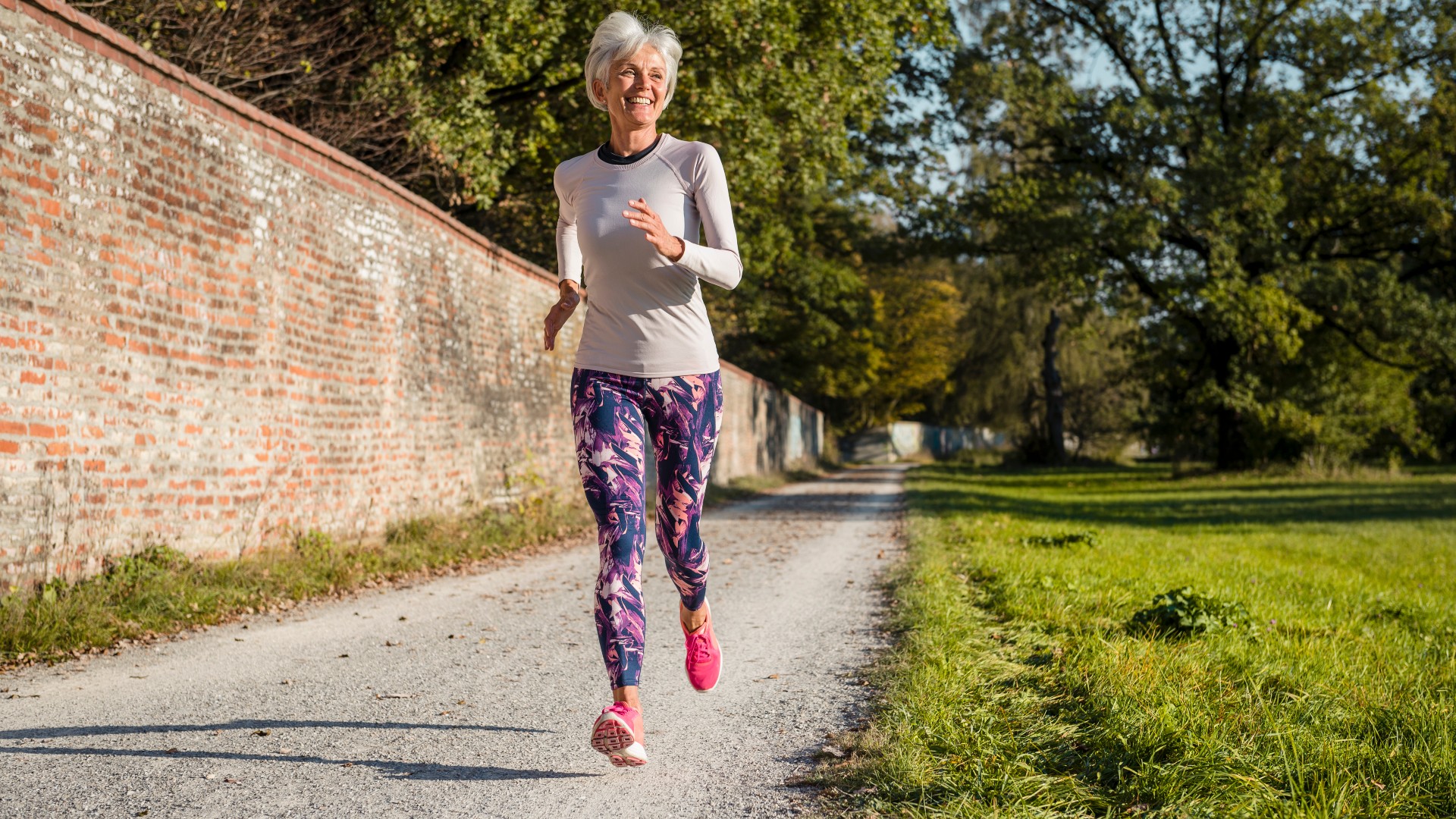
Vicario recommends trying walking, jogging or swimming around three times a week for at least 30 minutes - all great cardio options.
However, there are many other types of cardio exercise you can do. At the gym, hop onto the big pieces of equipment: treadmills, rowing machines, exercise bikes and elliptical machines are all great means of getting your heart rate up.
Alternatively, sign up for a class or download one of the best fitness apps to do sessions such as body pump, Zumba and aerobics. You could also try any of our fat-burning best exercises for weight loss.
Yoga and Pilates
Many menopausal women find that practicing yoga and Pilates has a positive impact, in particular when it comes to maintaining supple joints.
‘During the menopause, women may experience decreased spinal mobility,’ explains Vicario. ‘Whole body movements that focus on mobility, taking the joints through large ranges of motion are great for overall joint health. Both yoga and Pilates help promote joint health for women in menopause.’
If joint issues are a particular concern for you, take a look at our list of the best supplements for joints.
Taking a joint through its full range of motion also helps to maintain flexibility, so women can stay active and move freely as they age (our list of flexibility stretches can also be beneficial here).
Pilates in particular is also great for strengthening the pelvic floor. This is essential, Vicario says, to help the 'changing environment in the vaginal tissue due to lower levels of progesterone and oestrogen surrounding menopause, which can affect pelvic organ support and function.’
What's more, a 2012 study found evidence that yoga can help to relieve the psychological symptoms of menopause, such as irritability, depression, anxiety and sleep problems.
If you're new to yoga or Pilates, the good news is that it's really easy to get started - all you'll need is a suitable mat (such as one of the picks on our list of the best yoga mats) and some comfortable workout clothes. Check for local classes, or else try one of the numerous free sessions available on YouTube, such as this one by popular yogi Brett Larkin...
At-home menopause exercise plan
Prefer to workout in the comfort of your own home? Vicario has devised an easy menopause exercise plan features four simple moves you can do at home that will help mobilise, strengthen and stabilise. She recommends doing each move for 60 seconds on each side.
All of the moves will strengthen the pelvic floor and improve mobility and posture. They've also been specifically selected to target common physiological issues in menopause, as Vicario explains.
‘Women in the menopausal age bracket often have increased incidence of gluteal tendinopathy (constant pain near the side of the hip), plantar fasciitis (heel pain), and rotator cuff tendinopathy (pain and inflammation near the shoulder).
'Targeted hip, gluteal and abdominal strengthening, as well as shoulder and postural exercises can help combat some of these gradual changes that occur as our hormone levels shift.'
If you're particularly keen to work on your core, you could also try our list of the best workouts for abs.
For some of the moves, Vicario has incorporated the P.volve P.ball, an inflated ball that targets the inner thighs, abs, glutes and pelvic floor muscles. Whilst this will intensify the move, all of the exercises can be practiced without the use of the ball.
Leg lifts at 6
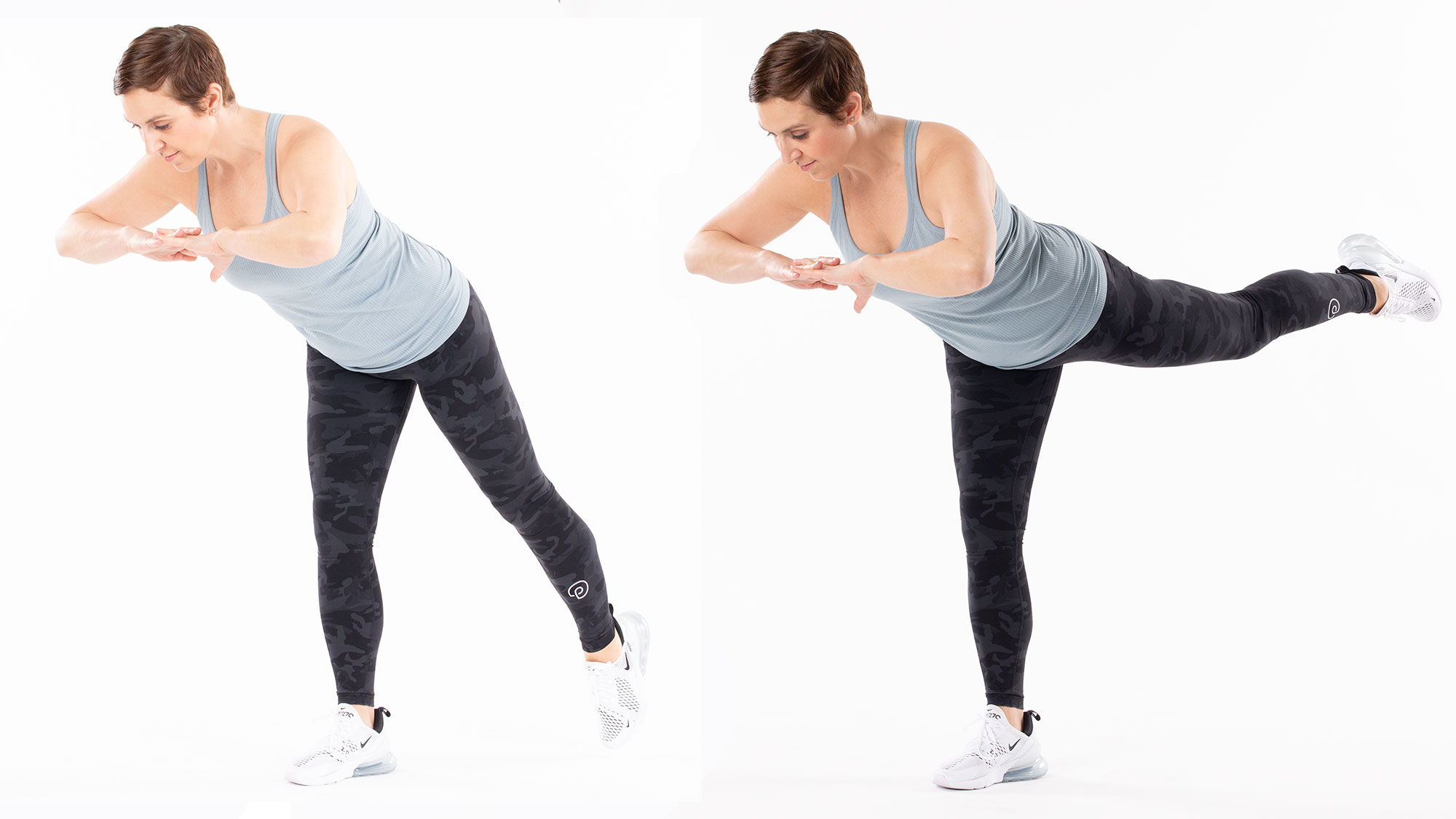
- Lean your upper body forward on a diagonal, with a long spine, abs held in tight and hands in prayer.
- Extend one leg straight back behind you and lift and lower the leg, lengthening and stretching behind your knee.
- Lift as high as you can without compromising your lower back - if your back starts to arch, you have gone too far so always prioritise length over height. Feel free to hold onto something to work up stability if needed!
- By standing on one leg, you are building bone density in the standing leg, overall stability and strengthening the glutes.
Fire hydrant
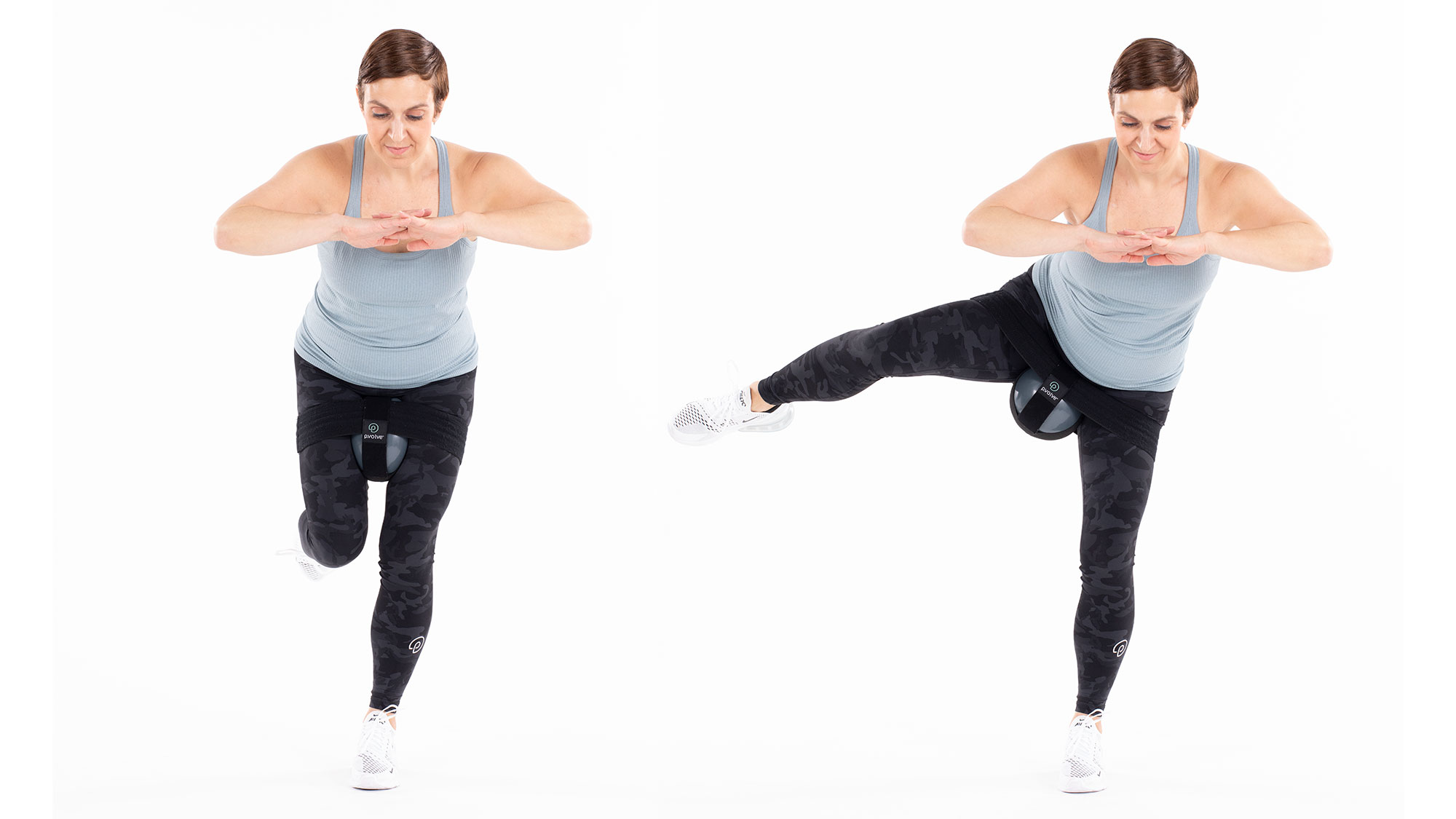
- From your staggered position, lift one shin up and begin to lift and lower the leg out to the side, squeezing the ball (if you are using it) and engaging through the pelvic floor on the way in.
- You are working your balance, pelvic floor, abdominals and bone strength all in one. If you need to hold onto something for balance that is absolutely fine.
Side plank
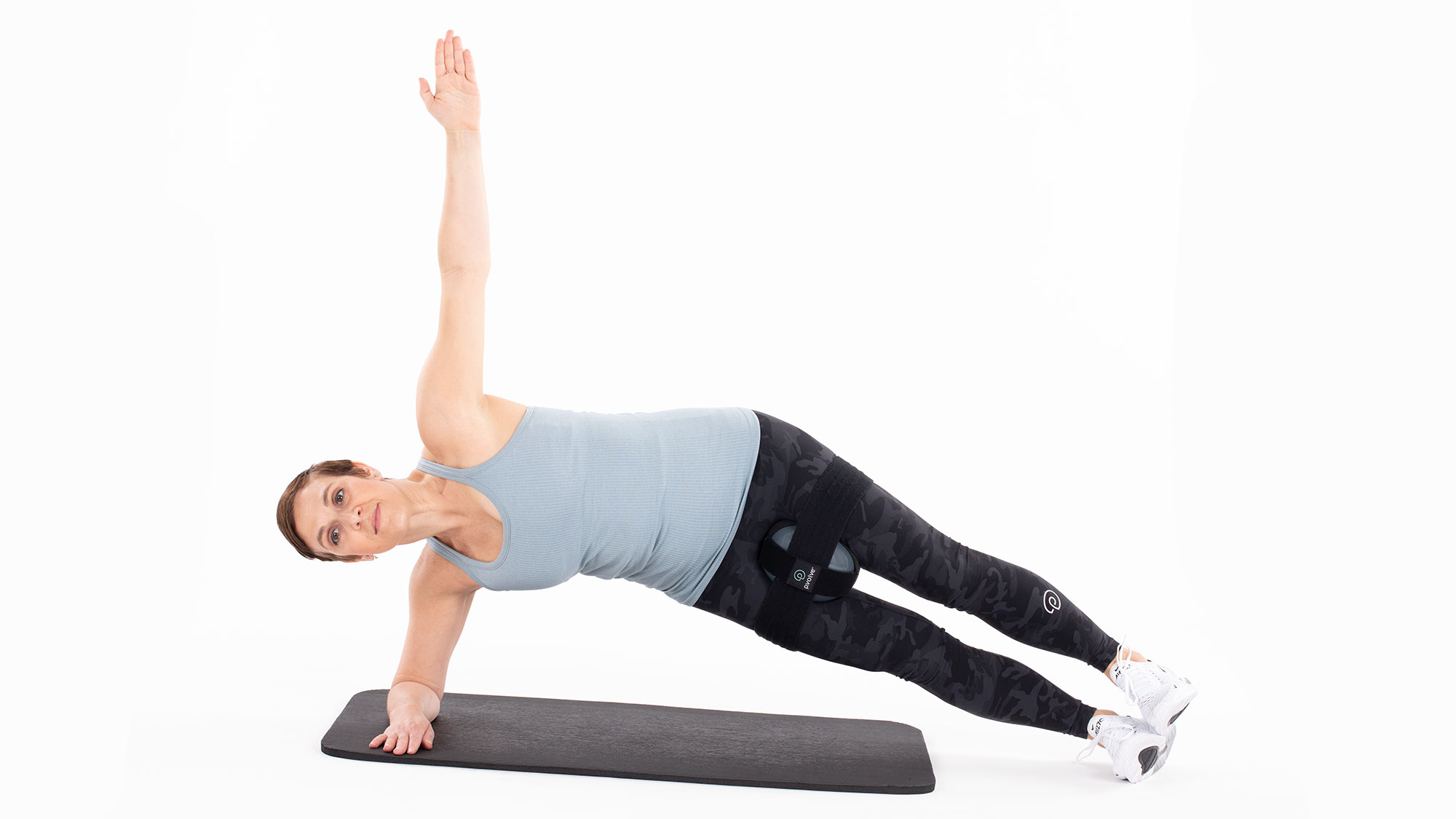
- Come to one forearm and outstretch your legs.
- If needed, you can always keep your bottom knee on the ground.
- Slowly lift and lower your hips, and engage through the pelvic floor as you lift.
Bridge
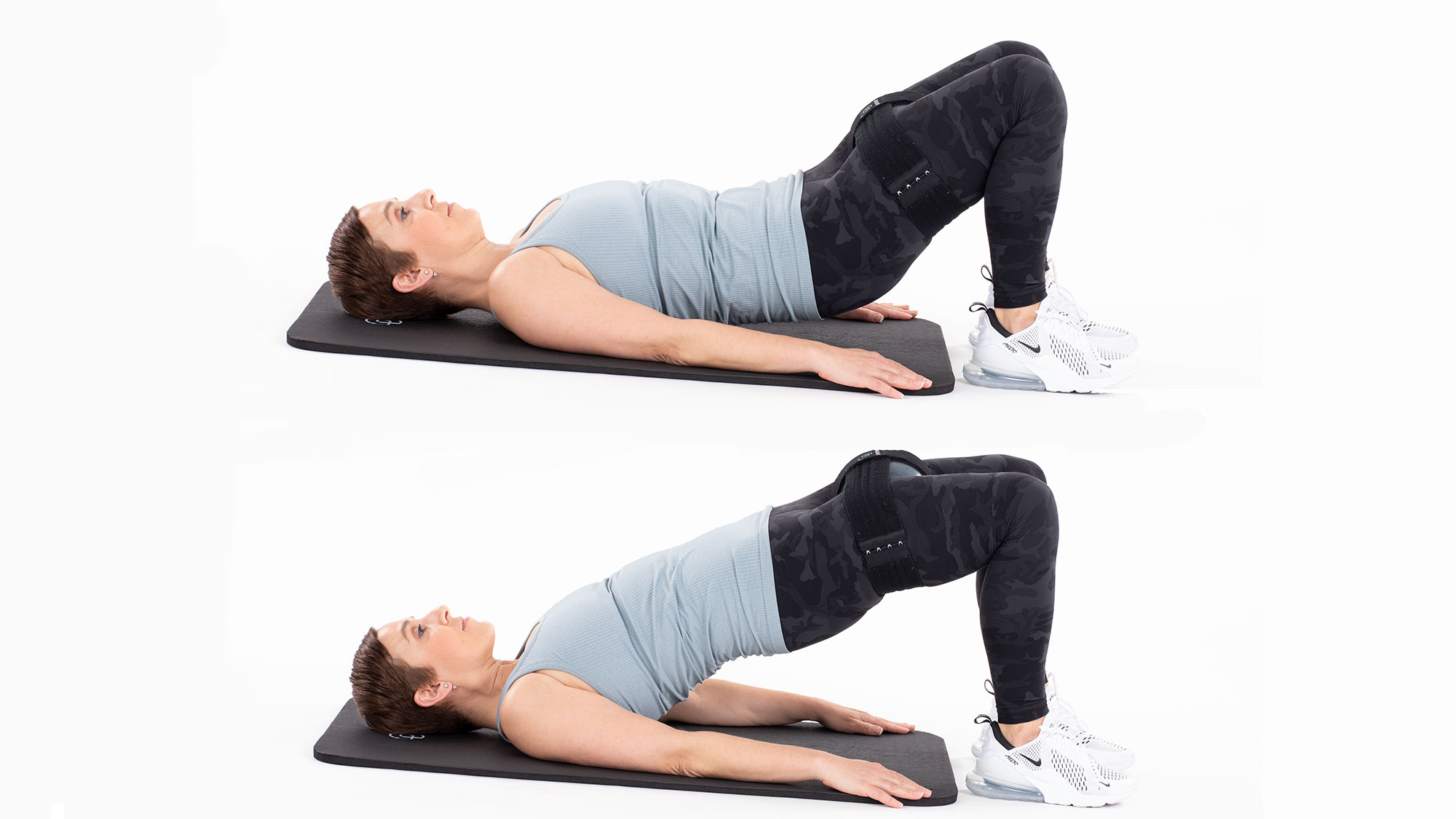
- Lie on your back with your knees bent, pressing your feet into the floor and with your arms relaxed by the sides.
- Press your hips up to the ceiling (squeezing the ball as you do so if you're using it), strengthening the glutes and deeply activating through the pelvic floor muscles.
- Lower down to a hover and repeat.
- Be sure to keep the abs scooped out as you lift and lower.
Lucy is a freelance journalist specializing in health, fitness and lifestyle. She was previously the Health and Fitness Editor across various women's magazines, including Woman&Home, Woman and Woman’s Own as well as Editor of Feel Good You. She has also previously written for titles including Now, Look, Cosmopolitan, GQ, Red and The Sun.
She lives and breathes all things fitness; working out every morning with a mix of running, weights, boxing and long walks. Lucy is a Level 3 personal trainer and teaches classes at various London studios. Plus, she's pre- and post-natal trained and helps new mums get back into fitness after the birth of their baby. Lucy claims that good sleep, plenty of food and a healthy gut (seriously, it's an obsession) are the key to maintaining energy and exercising efficiently. Saying this, she's partial to many classes of champagne and tequila on the rocks whilst out with her friends.
-
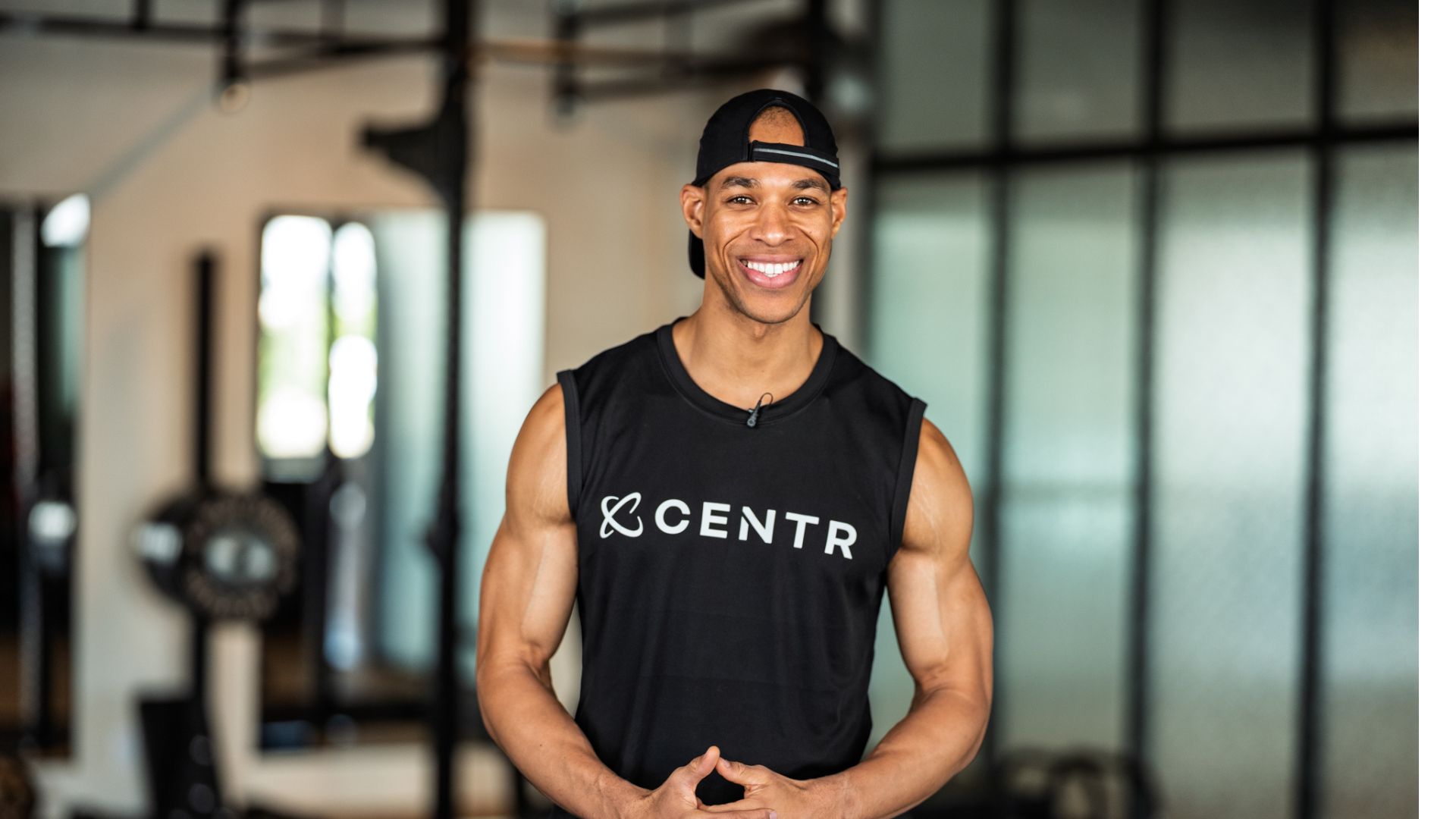 I do these two things every day to stay fit and healthy, says the newest star trainer on Chris Hemsworth's fitness app
I do these two things every day to stay fit and healthy, says the newest star trainer on Chris Hemsworth's fitness appHere's how Centr's Korey Rowe trains for longevity
By Sam Rider Published
-
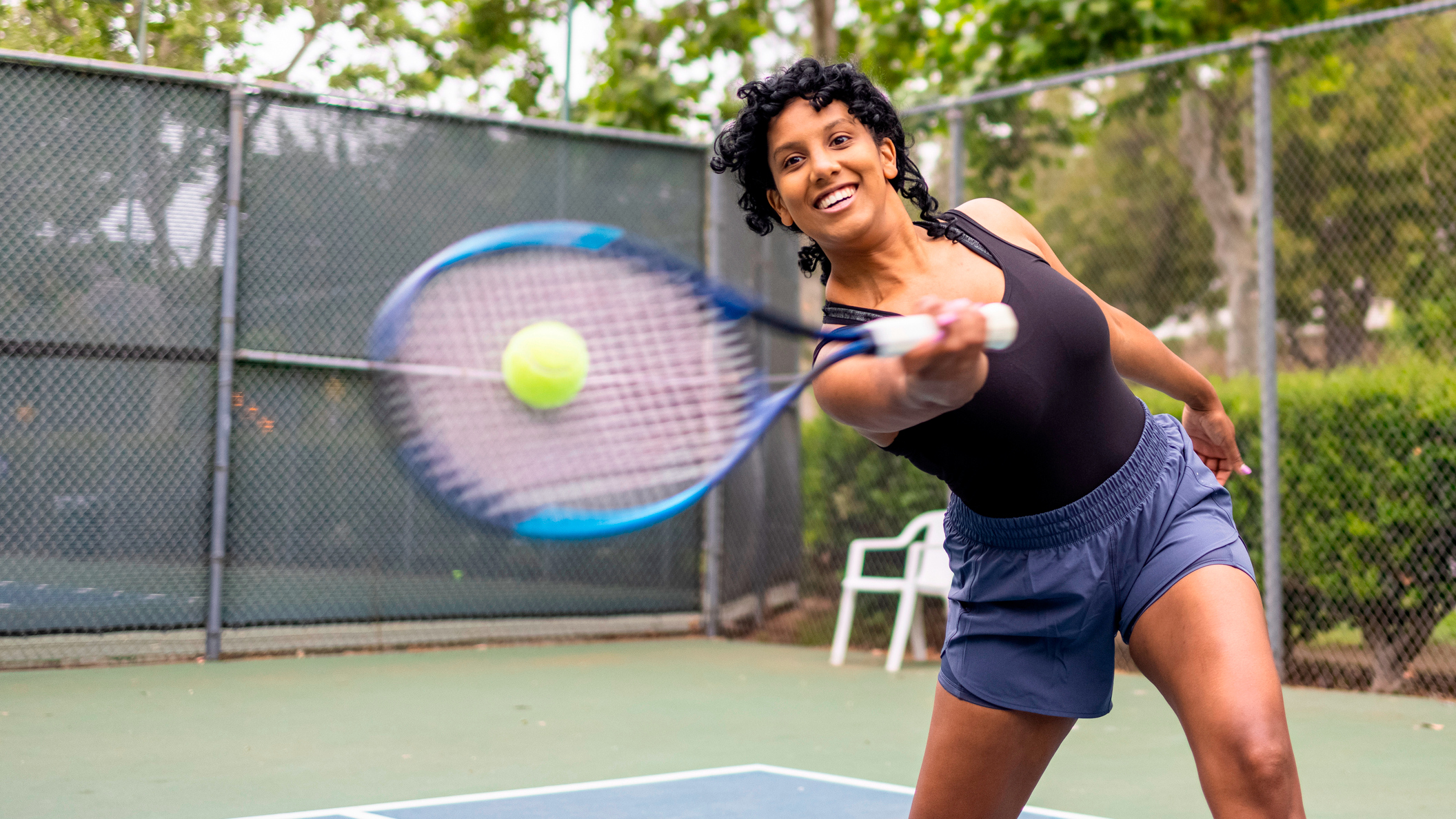 I thought sports weren't for me, until I realised they're a game-changer for ticking off cardio
I thought sports weren't for me, until I realised they're a game-changer for ticking off cardioI swapped HIIT and running for tennis—and I've never felt better
By Alice Porter Published